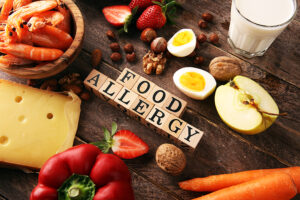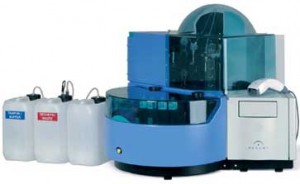A recent review in a BBC article explained why we see more food allergies. It is important to note that one of the more important food allergies are peanut allergies. Certainly, they have risen from 1 in 250 children in 1997 to 1 in 70 children in 2008.
By all means, allergies come in various degrees of severity; an anaphylactic reaction is the most severe form. Notably, in England there was a rise of hospital admissions for anaphylaxis from 1,015 in 2013 to 1746 in 2019. This is a 72% increase in 6 years!
Theories why there may be more food allergies now
There are a number of theories why food allergies have been on the rise. There is a consensus now that the right composition of the gut bacteria is important for normal immune reactions to take place.
Hygiene theory
David Strachan proposed the hygiene theory of allergies in 1989. Briefly, his observation was that children of larger families were less likely to develop allergies. He interpreted this to mean that infections among siblings stabilized the immune system. In the meantime, it has become obvious that the gut plays an important role for the immune system.
Graham Rook’s “old friends” theory
Graham Rook’s “old friends” theory came out in 2003. This theory states that friendly microbes in the environment are mixing with the gut flora. This trains the immune system to balance.
Gut bacteria theory
There is good evidence that the more a child is given antibiotics as a child, the more likely it is that the person develops a food allergy later. The mechanism seems to go via the gut flora. In a way this is the other coin of Graham Rook’s “old friends” theory. If you kill the “good friends” bacteria in the gut by antibiotics, the immune system strikes back with allergic reactions.
Dual-allergen exposure
By exposing the child at 4 to 11 months to peanuts or peanut butter, the immune system develops tolerance to the peanut protein (LEAP=learning early about peanut). A study showed that by doing this 80% of 5-year and older children and adults do not have a peanut allergy.
Prenatal vitamin D and food allergies
A German study found that prenatal exposure to higher amounts of vitamin D resulted in a higher risk of developing food allergies before the age of two.
Use antibiotics only when necessary
Gut biome studies showed that the use of antibiotics can have long lasting effects on the composition of the gut flora. A patient in sepsis may require antibiotics. But when the patient has recovered it is important that the bowel flora is restored with probiotics. This balances the immune system and avoids allergic reactions.
Immunotherapy for food allergies
Allergists have long used desensitisation techniques to deal with inhalant allergies. Allergy shots every two or three weeks can be very helpful to suppress immune reactions to inhalants. The same technique works also for many food allergies. The allergist tests the patient’s skin on the forearm to see what positive reactions occur. Based on these findings an allergy serum is composed. A small amount is injected in intervals. The smallest amount is given first and the concentration is gradually increased until the maintenance dose is reached. This causes the immune system to produce competing antibodies that reduce the antibody-mediated reaction to the food allergies.
Conclusion
Food allergies are increasing in frequency and severity. There are several theories why food allergies develop. The most likely one is that friendly bacteria in the environment become part of the gut environment in the newborn. If we have the right composition of gut bacteria our immune system reacts normally. Administering antibiotics frequently and overcleaning our kitchens with too many cleaning agents affects our bowel flora negatively. This disbalance can cause allergic reactions. On the other hand, exposing a newborn between the age of 4 and 11 months to a variety of adult foods including peanut products will desensitize the child to peanut protein and prevent future allergies. Those who are severely affected by food allergies can see an allergist for allergy testing and consider desensitisation through allergy injections.












